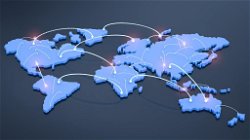Advice on Detecting Fake Devices
Devin Barton
. 2 min read
There are many knockoffs of popular brands, and sometimes they look so good that you may mistake them for the real thing. To save from throwing away cash on useless devices, it's important to put them through a thorough inspection before purchase. Take your time and inspect everything carefully, even if the salesperson is pressuring you to make a hurried decision. These are six pointers you may apply right now to spot and avoid fraudulent electronic devices with the help of experienced developers who can provide insights into the intricacies of genuine products. By consulting with knowledgeable experts in the field, you can ensure that you make an informed decision and steer clear of counterfeit items.

How to Spot Counterfeit Electronics: Tips to Avoid Knockoffs
Check the print quality of a new gadget's packaging carefully before purchasing
Wherever you look, the typeface should be readable and the same. No dangling objects should be inside. Manufacturers always ensure that their products are in excellent condition prior to shipping. The packing film's corners must be perfect. Second, every piece of technology is not complete without first consulting its user manual. The device's documentation must include all relevant details written in the local language.
It's probably a fake or a smuggled product if the packaging is in a language you don't understand
Likewise, read the content carefully. The grade of plastic, rubber, or metal, for example, might vary widely. Popular labels never skimp on quality components. There can be no seams or other blemishes on the plastic's surface. If you examine the tool closely, you'll see that it's made of low-quality plastic, complete with dull colours and bumpy finishes.
In addition, you should inspect the typefaces
A company's logo is the symbol it uses to identify itself to consumers, thus it should be treated as such. Constant care is taken to ensure that it cannot be altered in any manner. The logo's iconic quality will ensure that it is still readily recognized even after years of usage. The device's typefaces and icons need to be sleek, legible, and long-lasting. Fakes often either don't list the maker at all or list the erroneous company.
Separate plug-in block for European plugs if you're going to be using them in Europe
Warning signs include being asked to purchase an adaptor or a separate charger. There won't be any visible joins between the various plastic pieces of a genuine brand charger's case and the cheaper components. When it comes to the security of their products, manufacturers have the ultimate responsibility. And lastly, inspect the plugs and wires more closely. The quality of the wire is a telltale symptom of a fake.
Conclusion
In conclusion, when it comes to purchasing electronic devices, it's crucial to be vigilant and thorough in inspecting for potential knockoffs. Start by checking the print quality of the packaging, ensuring that the typeface is readable and consistent, and that the packaging is in a language you understand. Pay attention to the quality of the plastic, rubber, or metal used in the device, as well as the typefaces and icons on the gadget, as these can reveal signs of low-quality materials or counterfeit branding. By following these tips and being thorough in your inspection, you can spot and avoid fraudulent electronic devices, saving yourself from wasting money on useless knockoffs.
More Stories from
Illuminating the Future: A Comprehensive Guide to Light Emitting Diodes (LEDs)
Discover the history, working principles, and diverse applications of LEDs, from lighting and displays to automotive advancements.
Secure Encryption Payment Protocol: Ensuring Safe Transactions in the Digital Age
Learn about the benefits of SEPP, its role in preventing fraud, and how it fosters consumer trust in the rapidly growing world of online commerce.
International Telecommunication Union (ITU): Bridging the Global Digital Divide
The International Telecommunication Union (ITU) is a specialized agency of the United Nations, dedicated to promoting global connectivity.
The World Wide Web: Connecting Humanity Across Time and Space
From its inception by Sir Tim Berners-Lee to its exponential growth, learn how the Web revolutionized communication, commerce, and society at large.
Introduction to the Theory of Automata and Formal Languages
Learn how automata models and grammars shape programming languages, artificial intelligence, and more.
.png?height=40)









.png?width=40&aspect_ratio=1:1)
